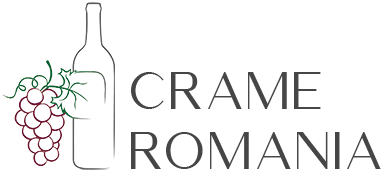

The northern regions see complicated alcoholic fermentation (AF) endings, with reinoculation with Bayanus type yeast and addition of activators.
The southern regions are less impacted by the hot, dry summer, but night-time temperatures have dropped drastically since mid-October.
Despite favorable pH levels, many malolactic fermentations (MLF) are at or near standstill. Several phenomena come into play. Native flora can be present in massive quantities, especially after rainy episodes. Together with sluggish alcoholic fermentations, which are a source of bacterial-inhibiting fatty acids, they deplete the wine of peptides and amino acids, which are essential for the smooth running of MLF.
Specific recommendations for each situation
1. Fast and efficient MLF objective, on wines with a Alc. < 15% vol
→ Choose Viniflora® CH11

This strain is ideal when the temperature of the wine is at its limit (14°C min.).
2. For wines with Alc. > 15%
→ Choose Viniflora® CH16

Both strains exist in both freeze-dried (FD) and frozen (Frozen LS, and Freasy) versions. For late inoculation, we recommend the two Freasy strains, which have a high specification of 2 E+13 CFU/sachet, allowing an inoculation rate of 4.0 E+6 CFU/ml with one bag/50 hl.
3. Resumption of activity after an early start and early stop of MLF
→ Choose Viniflora® SPARTA

Following a temperature shock in particular, bacteria can stop degrading malic acid.
With the reduction in the use of SO2 in winemaking, many MLF start under marc and on sugars. Uncontrolled, they leave very low concentrations of malic acid in nitrogen-poor environments. The curative strain is Viniflora® Sparta.
This strain is available in frozen version (Frozen), in 50 MLU bags (Malo Lactic Unit) whose dosage can be adapted according to the wine parameters.
1 MLU = 1 hl if only one parameter is faulty.
1 MLU = 0,5 hl if two parameters are at the limit.
Importance of nutrition
Before any use of bacteria, we recommend that you dose the post-FA organic nitrogen: the nutrient reserve for the BAN (or NOPA) bacteria. Indeed, we remind you that bacteria cannot consume mineral nitrogen.
For wines in nutrient deficiency (NOPA < 60 mg/l) use Bactiv aid 2.0 (12 g/hl), whose composition is shown below.

Field data corroborates observations
Example of a Merlot 2020 red wine inoculated with Viniflora CiNe (Bordeaux)

The wine is deficient in assimilable nitrogen.
Observation of lactic bacteria by epifluorescence

The concentration of lactic acid bacteria remains above the MLF trigger threshold (1 E+6 CFU/ml), but the wine is clearly deficient in amino nitrogen: MLF is latent.
Example of another Merlot inoculated with Viniflora CH16 (Occitanie)

The wine is deficient in assimilable nitrogen.
Microbial analysis (Flow cytometry 3D) before addition of Bactiv aid :

Most bacteria are in a physiologically weakened state (VNC: Viable Non-Cultivable). Their wall becomes permeable to external aggressions (Alcohol for example), and their metabolic activity is very reduced.
On this same wine, here is the observation of lactic bacteria by epifluorescence 2 days after the addition of Bactiv aid 2.0 (12 g/hl).

The addition of nutrients therefore allowed the bacteria to resume growth.
These examples highlight the impact of nitrogen nutrition, which is often neglected, on bacterial viability and consequently on the achievement of MLF.
Conclusion
We can recall that a good fermentation momentum is a guarantee of bioprotection for the wine and helps to avoid certain contaminations and associated sensory drifts (Brett., volatile acidity). It is therefore very important to take care of your fermentations as quickly as possible as soon as an anomaly is perceived.

Chr. Hansen is a global, differentiated bioscience company that develops natural ingredient solutions for the food, nutritional, pharmaceutical and agricultural industries. At Chr. Hansen we are uniquely positioned to drive positive change through microbial solutions. We have worked for over 145 years to enable sustainable agriculture, cleaner labels and healthier living for more people around the world. Our microbial and fermentation technology platforms, including our broad and relevant collection of around 40,000 microbial strains, have game-changing potential. Matching customer needs and global trends we continue to unlock the power of good bacteria to respond to global challenges such as food waste, global health and the overuse of antibiotics and pesticides. As the world’s most sustainable biotech company, we touch the lives of more than 1 billion people every day. Driven by our legacy of innovation and curiosity to pioneer science, our purpose – To grow a better world. Naturally. – is at the heart of everything we do.
www.chr-hansen.com
www.chr-hansen.com



















